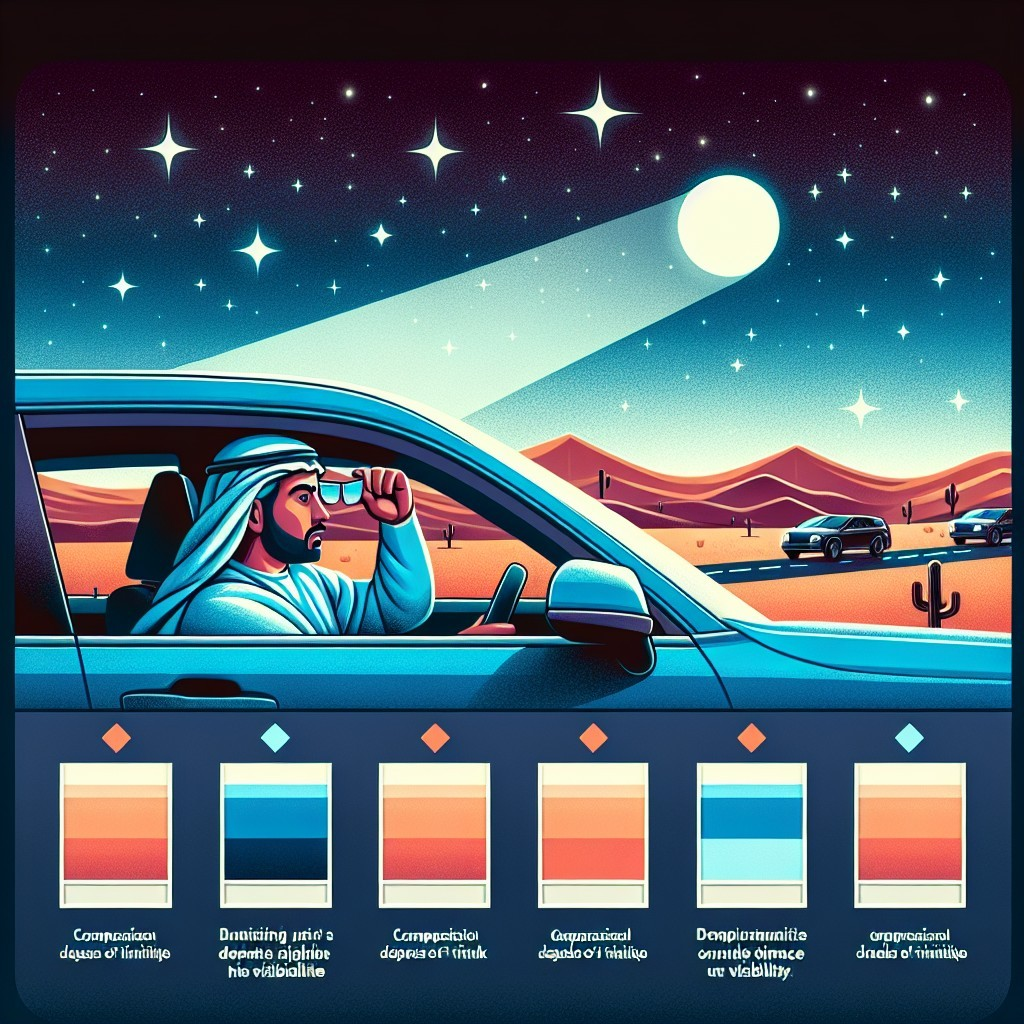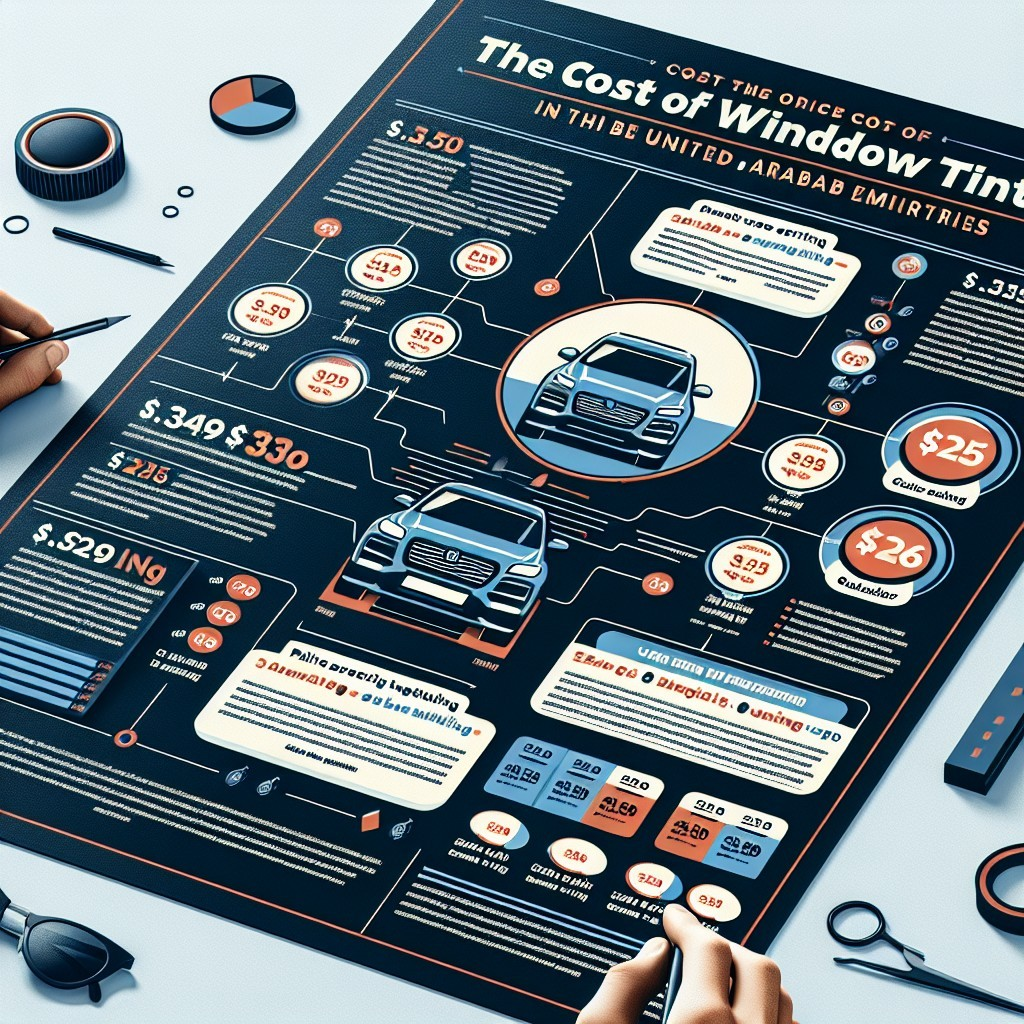Car window tinting is a popular choice among drivers in the UAE, not just for aesthetic appeal but also for practical benefits such as heat reduction and UV protection. However, a common concern among car owners is whether tinted windows affect visibility at night. Let’s delve into this topic and explore what UAE drivers need to consider.
The Basics of Car Tinting
Window tinting involves applying a thin film to the glass of a vehicle. This film can vary in thickness and shade, influencing how much light passes through. The two main types of tint are:
- Dyed Window Film: Offers a sleek look and reduces glare, but may not provide significant heat reduction.
- Metalized Window Film: Provides better heat rejection and adds strength to the glass, but can interfere with electronic signals.
Impact on Night Visibility
One of the primary concerns with tinted windows is their effect on visibility after dark. The general consensus among experts suggests that:
- Dark Tints Reduce Light Transmission: Tinted windows can significantly limit the amount of light that enters the vehicle, which might hinder visibility at night.
- Glare Reduction: While tinted windows can reduce glare from oncoming headlights, overly dark tints can create a contrast that may lead to difficulty in discerning objects outside the vehicle.
Legal Regulations in the UAE
UAE laws regarding window tinting are strict, and drivers must adhere to specific guidelines to ensure safety and compliance:
- Front Windshield: Must allow at least 70% light transmission.
- Front Side Windows: Similar regulations requiring a minimum of 70% light transmission.
- Back Side and Rear Windows: Can be tinted darker, but must not exceed the limits set by local authorities.
Tips for UAE Drivers
For drivers considering tinting their windows, here are some essential tips:
- Choose the Right Tint: Opt for a tint that strikes a balance between aesthetics and visibility. A lighter tint may be more beneficial for night driving.
- Consult Professionals: Work with reputable tinting professionals who understand local laws and can recommend suitable products.
- Test Visibility: Before finalizing the tint, evaluate how it affects visibility in different lighting conditions.
While car tinting can enhance the driving experience in the UAE, it’s crucial to consider its effects on night visibility. By choosing the right tint and adhering to local regulations, drivers can enjoy the benefits of tinted windows without compromising safety. Remember, visibility is paramount—drive smart, drive safe!
As we explore the nuances of car tinting and its implications for night driving, it’s critical to consider the technological advancements in tint materials and the varying levels of tinting available. With innovations in ceramic and nano-technology films, some products are designed to maintain visibility while still offering excellent heat rejection and UV protection. These advanced tints can effectively reduce glare without severely compromising visibility, making them a more suitable option for nighttime driving as well.
Understanding Light Transmission Ratings
When selecting a window tint, it’s vital for drivers to understand the concept of Visible Light Transmission (VLT). This measurement indicates the percentage of visible light that can enter through the tinted glass. For example, a tint with a VLT of 70% allows 70% of light to pass through, which is ideal for maintaining visibility during the night while still providing glare reduction during the day.
UAE drivers should consider opting for tints that have a higher VLT for front windshields and front side windows to comply with local regulations and ensure optimal visibility after dark. The balance between aesthetics and safety can be achieved by selecting tints that enhance the vehicle’s appearance without sacrificing functionality.
Driving Habits and Environmental Factors
Another important factor to consider is individual driving habits and environmental conditions. UAE drivers often deal with extreme heat and intense sunlight, particularly during the summer months. Tinted windows serve to reduce the interior temperature of vehicles, making them more comfortable. However, during nighttime driving, the challenges can shift based on the environment.
In urban areas with well-lit streets, a lighter tint may suffice, allowing sufficient light to penetrate while still providing protection from UV rays and glare. Conversely, in rural areas with less ambient light, drivers may want to be more cautious about choosing darker tints that could impede visibility.
Maintaining Tint for Optimal Performance
Once the right tint is applied, maintaining it is key to ensuring that visibility remains optimal. Regular cleaning with non-abrasive materials and avoiding harsh chemicals can help preserve the tint’s integrity. Additionally, keeping windows clear of any obstructions such as dirt or condensation can further enhance visibility during nighttime driving.



The tips for choosing the right tint are super helpful! I’ll definitely keep these in mind when I get my car tinted.
This article helped clarify my concerns regarding night visibility with tinted windows. Thanks for breaking it down so well!
I never realized how much tinting could affect visibility at night. This is a must-read for anyone considering window tinting!
I appreciate the focus on legal regulations in the UAE. It
Great article! I learned a lot about the different types of window tints and their effects. Very informative!